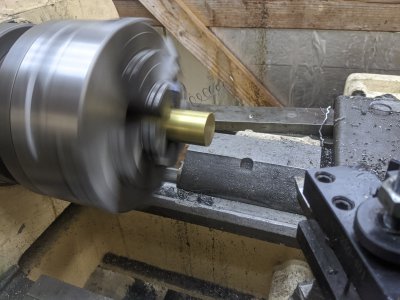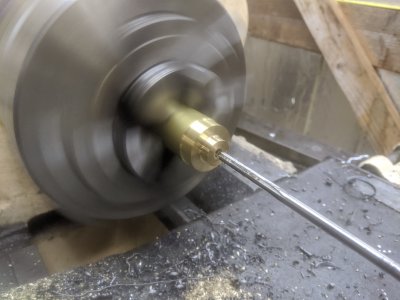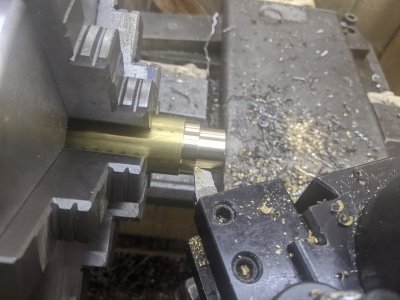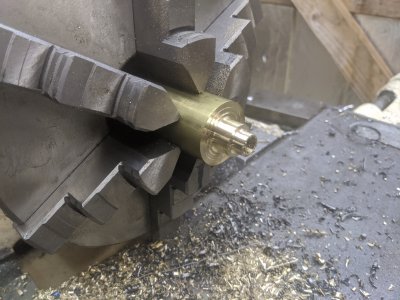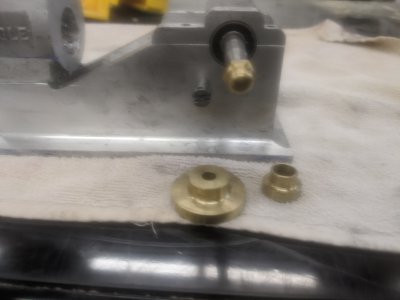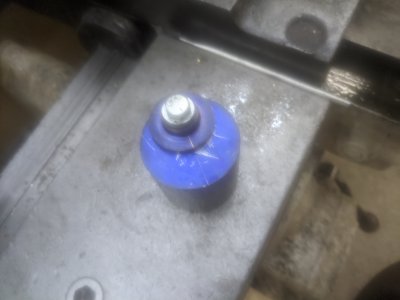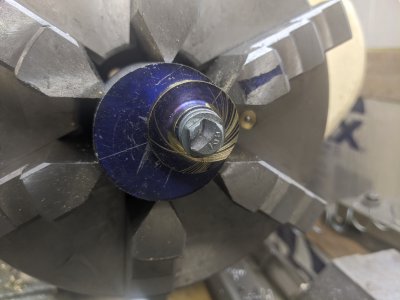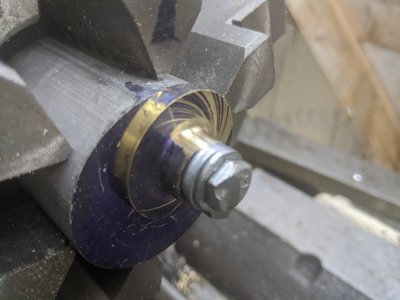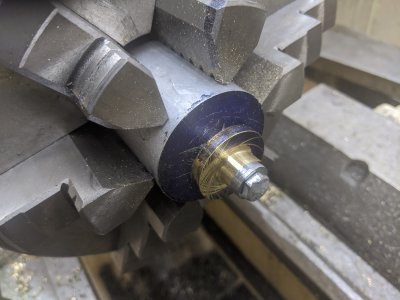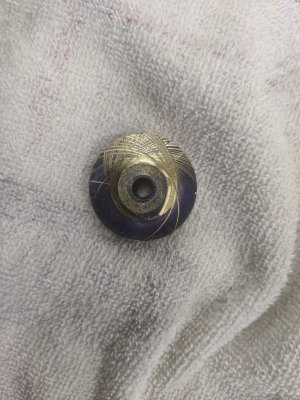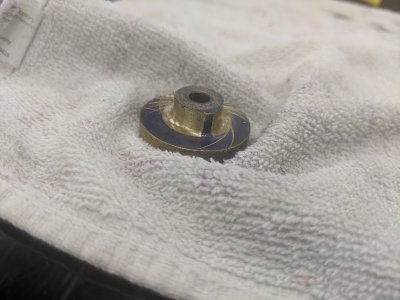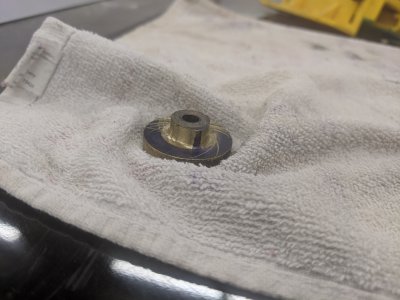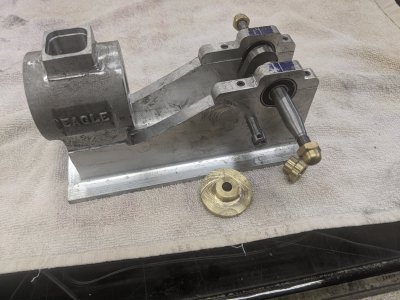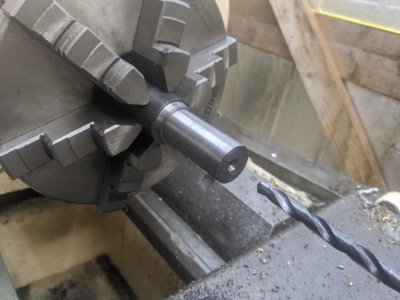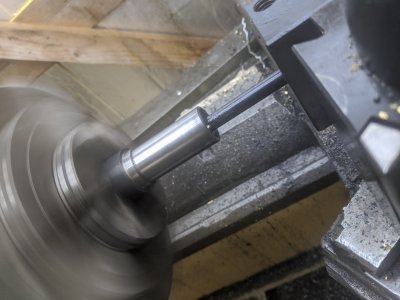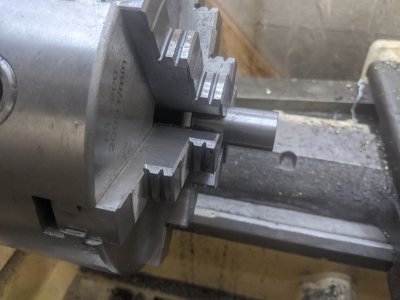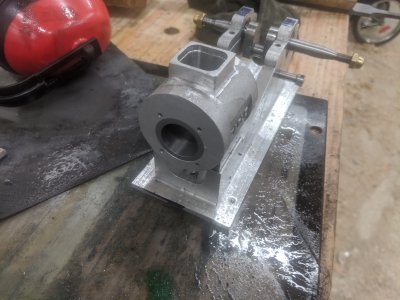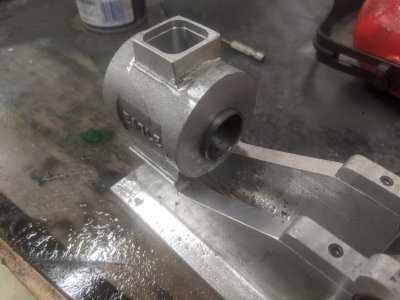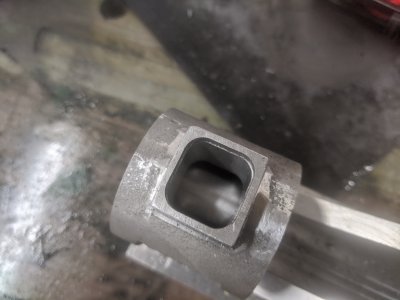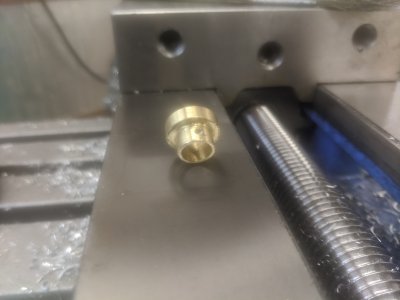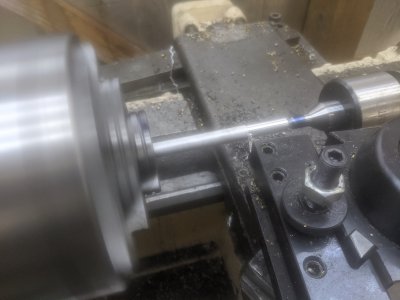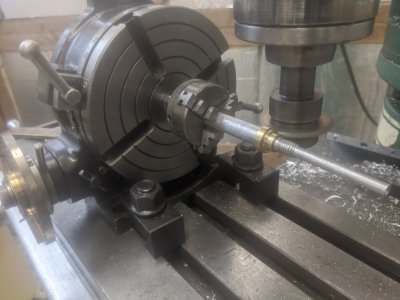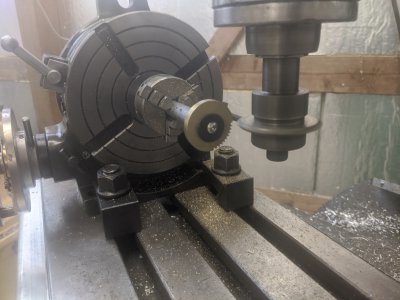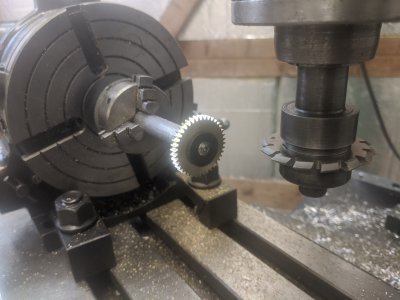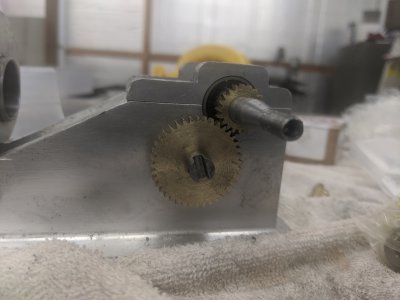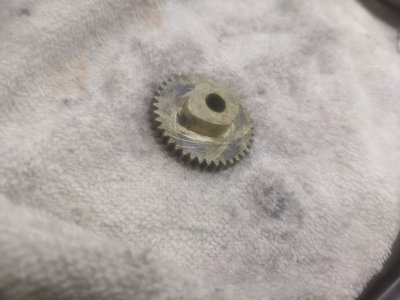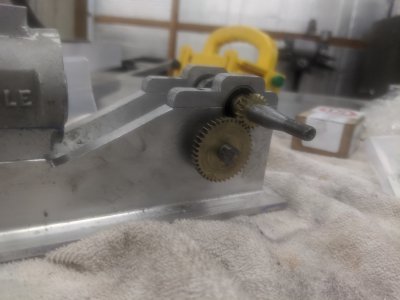Day 12: Finishing the frame, making the camshaft-
I had a decent amount of time in the shop today, but only 1/2 of it was this project! See my soon-to-be-created thread (probably member projects?) for the quick one I'm working on in order to be able to do my next pair of parts.
Goal #1 today was to "finish" the frame, which is a bit of a lie since there are another 1/2 dozen or so tapped holes that go on it in a couple of places, but those are transfer drilled from other things.
Since I made the frame 'square', I had a reference surface to use in the vise, so I used that to cut the bearing bores as my first task. I started by center drilling the top, then 1/4", then 3/8", then 1/2":
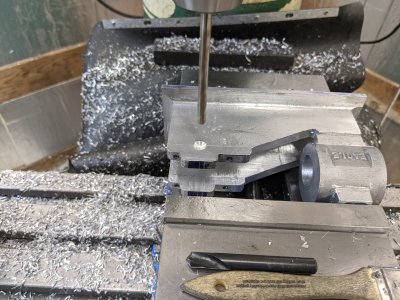
Now that I had clearance, I center drilled the bottom half:
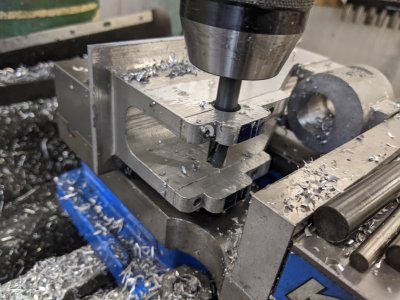
Then I went to town with the boring head/boring bar. I cut until RIGHT on my size mark, though the bearings are a little loose since they are apparently a touch undersized. This isn't a problem, and I planned for it! The directions say they don't have to be 'tight', but I want them to be anyway.
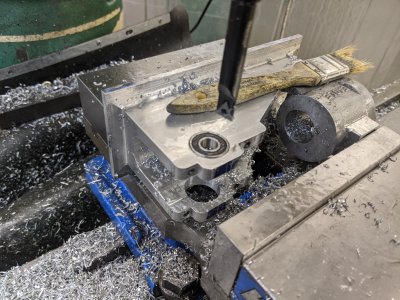
Next I used the DRO to locate, center drill, drill, and ream the camshaft hole. The camshaft (made next) is a small piece of non-rotating tool steel that holes the gear in place (plus has another duty). Location is pretty critical, so I was glad to have the DRO and to do it in 1 setup.
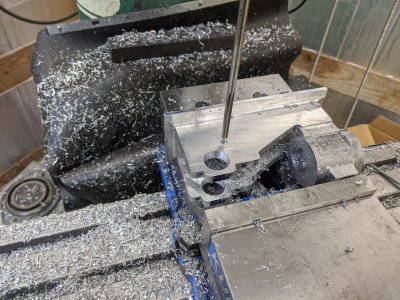
I took about 3 thou off the bottom of each bearing cap, and it tightened the bearing fit right up. The camshaft is held in place with a set-screw, so this threaded hole (with the tap in it) is what holds it in place. I realized that my threads didn't make it to the bottom, so I tried to re-tap it. However, I found that my tap didn't make it to the bottom! It 'bottomed' out at the top of the tap. SO, I used my hand drill to cut #32 (clearance fit) about 1/8" down from the top until the bottoming tap peeked out into the hole. I re-reamed the hole quickly to clean it up, and counted this part done.
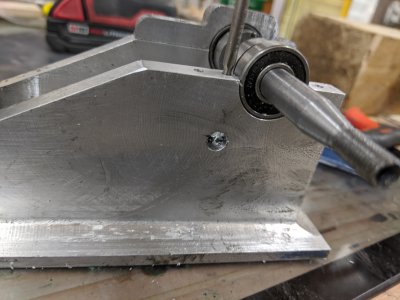
And here it is assembled! The plans call for making the Acorn nuts, but they were $8 for 25 on ebay, so I just ordered them.
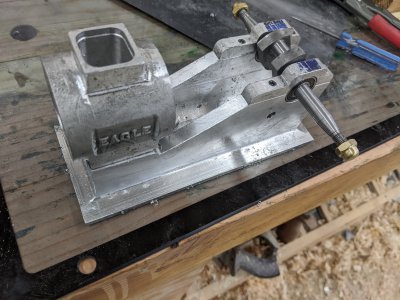
Onto the next part, the camshaft! I chose this for 2 reasons: first, I want to start building the parts 'outward' from what I have, meaning I never want to make a part without a way of attaching it to the 'rest' from now on. It makes things easier to visualize, and tougher to lose. Second: I needed a win. The crankshaft and frame were such a discouraging pain, I went with a pretty simple part. My NEXT part is even scarier, so a quick and easy one felt like a good idea

Step 1 was to chuck up some 'drill rod' (O1 tool steel) and cut it into a 'pin' shape. .350 on the large end, .250 on the small. Length of the small end is given to 3 decimal places, but looking at the plans as long as it hits its minimum, I don't think it matters. I left it a little long, in part because my frame is a touch wider than the casting was. This part went easy enough!
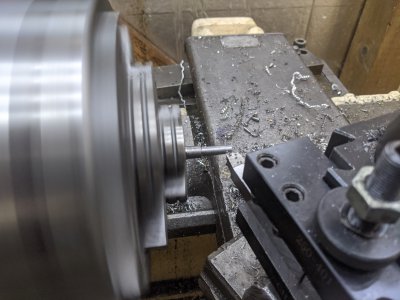
Next, I needed a 1/8" slot down the middle that holds an arm later on. The width/centeredness is specified in the plans, but the 'depth' is not annoyingly enough. The 'instruction' sheets say "don't cut it too deep", but thats about all the info you get. I used the cad printout in the plans, measured that, and got it pretty close to what that was (though, the plans for this part are 1.5x!).
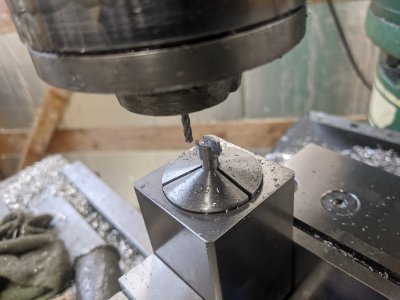
There is a cross-hole for a 4-40 bolt here, though only 1/2 is threaded (the other half is clearance fit). SO, I drilled all the way through with my #43 as my threading, then 1/2 way through with the #32 clearance. Then tapped the bottom, and was all set with this part!
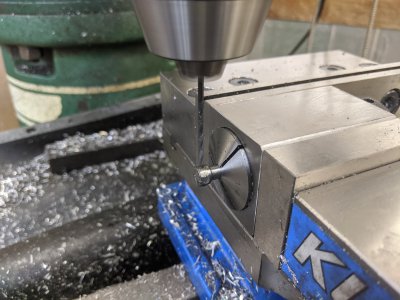
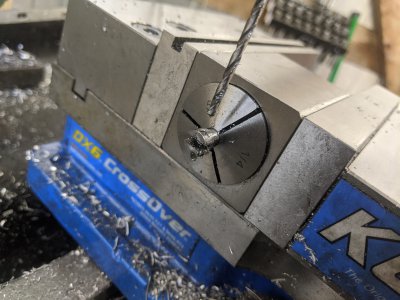
And here the camshaft is installed!
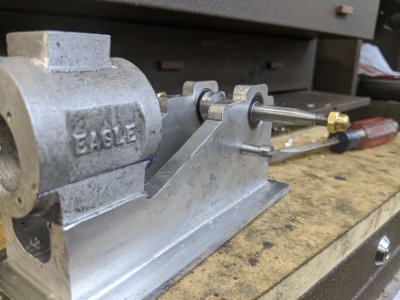
As I mentioned, my next parts require some additional tooling, so I spent rest of the afternoon starting on that. Hopefully I can get back to this soon!













